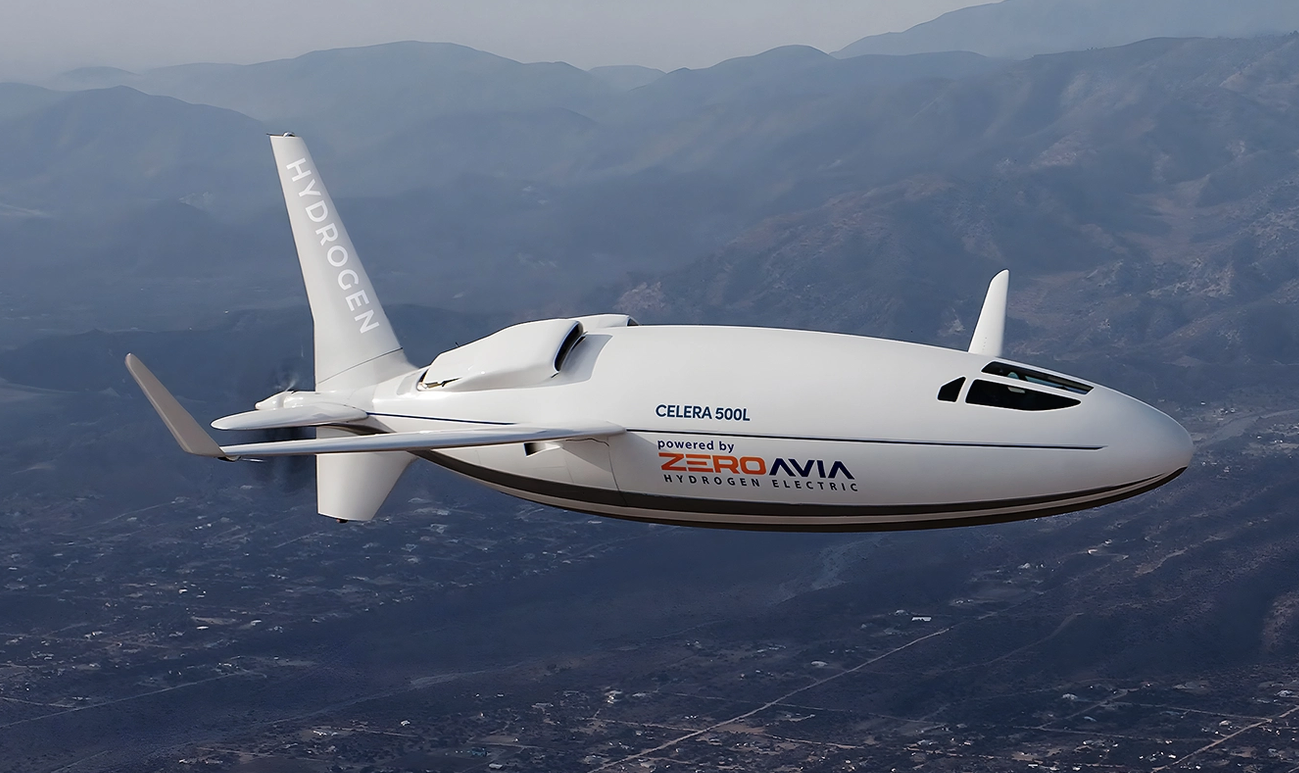ZeroAvia announced a collaboration with Otto Aviation to develop a H2-electric powertrain to power Otto’s Celera aircraft.

Under the agreement, Otto and ZeroAvia will work to integrate ZeroAvia’s ZA600 zero-emission engines to Otto’s revolutionary Celera aircraft. The collaboration has the potential to make the Celera the first new airframe design to leverage zero-emission propulsion in its launch models.
The Celera is a highly innovative new model of transcontinental aircraft, scalable to 19 passengers, that significantly improves the efficiency of flight and reduces the operational costs of flying as a result. This combination significantly expands the opportunities for private air transportation.
Otto’s advanced aircraft design offers exceptionally low drag across the entire aircraft. The design of the Celera fuselage, empennage and wings take advantage of laminar flow. Laminar flow is the minimum drag solution for aircraft surfaces and features smooth layers of airflow with little to no mixing of adjacent layers. When coupled with highly fuel-efficient propulsion systems, the Celera will significantly reduce operating costs and increase range relative to comparable aircraft, while creating optimal passenger comfort and cargo capacity.
When powered by ZeroAvia’s powertrain, the Celera will offer long range zero-emission flights, while further reducing operating costs, thanks to reduced maintenance costs and falling H2-fuel prices. The Celera design is highly conducive to accommodate large volumes of H2 within the fuselage that will enable 1,000 nautical miles of range - all with zero climate impact from carbon and non-carbon emissions (like NOx, SOx and particulates). With non-carbon emissions from relatively inefficient, high temperature combustion contributing over half of the total climate impact of aviation, long range H2-electric aircraft such as Celera will play an important role in eliminating all climate impacts of aviation.
Announcing the partnership today, William Otto, CEO of Otto Aviation, said, “ZeroAvia’s H2-electric powertrain helps us to realize the commitment Otto has made to lower operating costs and climate impact for operators. Otto is looking to provide the most efficient aircraft in all senses of the word: minimizing maintenance and operating costs and reducing emissions.”
Val Miftakhov, ZeroAvia, Founder & CEO said, “The majority of our commercial deals to date have focused on retrofit and line-fit for existing airframes, which is essential to deliver zero-emission flight to market as quickly as possible. However, efficiency gains from new airframe design can expand the impact of zero-emission aviation. We are pleased to collaborate with innovators, like Otto Aviation, bringing cutting-edge clean sheet designs to market as we can optimize the H2-electric propulsion system for those designs.”
ZeroAvia’s mission is to deliver H2-electric engines into every aircraft, having identified the technology as the most practical, economical and furthest reaching solution for reducing aviation’s climate change and clean air impacts. H2-electric engines use H2 in fuel cells to generate electricity, which is then used to power electric motors to turn the aircraft’s propellers, with the only byproduct being water.
The development of this 600kW powertrain is part of Project HyFlyer II and will deliver a fully certified powertrain for aircraft of up to 19-seats by 2024. HyFlyer II is supported by the UK Government’s Department for Business, Energy and Industry Strategy, Aerospace Technology Institute (ATI), and Innovate UK through the ATI Program. After having flown multiple 6-seat R&D prototypes, ZeroAvia is preparing its first 19-seat prototype for its inaugural flight in the coming weeks. The company is also retrofitting a second Dornier-228 testbed in Hollister, California, to conduct further flight testing.